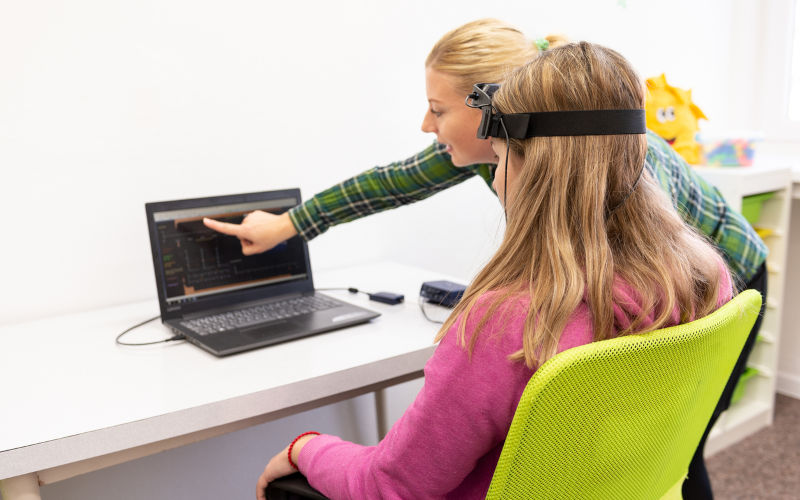Neurofeedback works for trauma – let’s use it!!!
February 22, 2023
Everyone who has suffered abuse as a child deserves the opportunity to live free of its detrimental effects.
Abuse affects the brain just as it affects the body. And just as bodies can heal, so can brains.
Developmental trauma happening to children and youth while they are still growing, causes structural changes in the brain that are deleterious to living a good life.
The brain of the traumatised person is usually hyper alert, scanning for threats to protect itself, to survive and create the next generation.
This inhibits executive functioning, decision making and the ability to manage stress. It creates high anxiety and results in poor life performance.
Developmental trauma is trans-diagnostic, so the symptoms and type of disorder depend on one’s genetic and epigenetic background, while the severity of disorder matches the severity of trauma.
It’s time we recognised that developmental trauma underlies many mental health problems. If we address and heal that trauma people will have a greater chance of reaching their full potential and becoming vibrant community members.
While the change of classification of psilocybin and MDMA to enable prescribing by authorised psychiatrists attracts media coverage, it is disappointing that we already have gentle brain treatment that is effective for traumatised people, but it is not utilised and lacks media interest.
For over 40 years, analysis of brain function using quantitative EEG, followed up by treatment of symptoms and signs with EEG neurofeedback, has been effective with a wide range of disorders, particularly those that are more severe and not responsive to talking or medication therapies.
Neurofeedback trains the brain away from habitual excessive scanning for threats and diverting brain resources to deal with them. Once brain function is re-set through calming neurofeedback, many people cease to have a DSM 5 diagnosis, and almost all have significantly improved life performance. Others may still have a diagnosis, but talking and medication therapies are then more effective, so they feel and perform a lot better. Neurofeedback is not a cure all, but it is an enabler of improved brain function and life performance.
To illustrate this, the NSW Service for the Treatment and Rehabilitation of Torture and Trauma Survivors (STARTTS) treats around 7,500 refugees with every type of trauma and high severity of disorder. Since 2003, QEEG analysis and neurofeedback has been found to be the most effective way of treating the most severe trauma and PTSD, with the results virtually permanent.
At the headspace Early Psychosis Youth Service in Western Sydney last year it was found that almost all the young people had histories of significant developmental trauma. A small case series showed they all had abnormal QEEGs compared to a normative database. They all responded to neurofeedback, including a woman with treatment resistant schizophrenia (despite four years of the world’s best practice recovery programme). She had a history of severe developmental trauma and despite trials of all the relevant medications, psychotherapy and recovery activities, she was still disabled by psychosis. After a course of neurofeedback, she became calm, could sleep properly, became organised in her thoughts, and had improved confidence and mood. She no longer needed illicit drugs to temporarily feel better, she learnt to drive and left her abusive boyfriend. She remained on a low dose of clozapine medicine, as appropriate for schizophrenia, to prevent relapses. She stated she felt 300% better, and when followed up one year later, said that all the benefits of neurofeedback continued. She has organised for her sister to have neurofeedback.
STARTTS needs more clinicians to be trained in these skills to match refugee demand, let alone to treat the very large number of severely traumatised people in the general community.
An estimated five million Australian adults have unresolved childhood trauma and abuse, with costs calculated at $24 billion. The 2018 NSW Government report, Forecasting Future Outcomes, revealed 7% of the NSW population would use 50% of the state’s resources by the age of 40.
American studies on how traumatic childhood experiences negatively affect health show that eradicating child abuse would reduce the rate of depression by half, alcoholism by two-thirds, and suicide, serious drug abuse, and domestic violence by 75%.
If we can’t prevent child abuse and its resultant trauma, we should at least make effective treatments available.
To offer neurofeedback to the general population, more clinicians need to learn these skills. Currently there are only 56 internationally certified neurofeedback practitioners in Australia, with 19 certified as Supervisors. Twenty people have a qEEG Diploma in Australia. Only a minority work with trauma, which requires additional skills and personal support.
It’s time to enact change in the way we treat severe mental health disorders. We need the courage to seriously invest in a pathway to implement the knowledge we have, and train practitioners.
